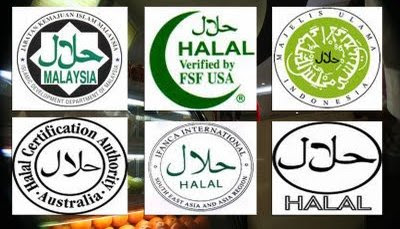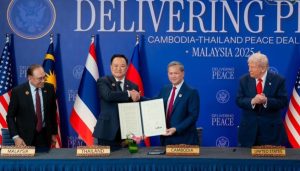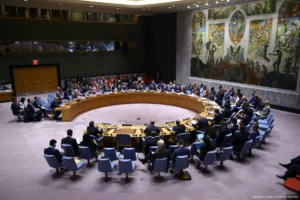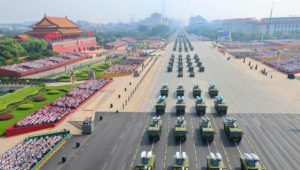Revised regulations
The Ningxia Hui autonomous region, where Muslims account for more than 35 percent of the population, implemented its local halal food regulations in 2003, before revising them in 2011.
The revised regulations are stricter than the original version. In addition to the original requirement that the owners of halal food producers and key staff members who deal with food must be Muslim, the updated regulations require that all those in managerial positions must also follow the faith to guarantee the food chain won’t contaminated by the introduction of non-halal products. The regulations also prohibit the presence of non-halal food and ingredients in halal food factories or restaurants.
The regulations vary from place to place and region to region, but all are based on Islamic dietary guidelines. The regulations in Ningxia and the Xinjiang Uygur autonomous region, implemented in 2005, require that when an animal is slaughtered, the jugular vein must be cut and the blood allowed to drain freely from the animal. Moreover, staff must ensure that they do everything possible to reduce the amount of pain the animal endures believers claim that slaughtering an animal in the halal fashion cuts off the oxygen supply to the brain and inhibits pain receptors. The animals are also blessed with prayers.
Also Read: Who Exactly is the RSF Group Shaking Sudan?
“In collaboration with the local administration for industry and commerce, we conduct random inspections, covering everything from large slaughterhouses to small noodle restaurants, to ensure that no one carries out non-hahal activities in these places,” said Ding Yi, director of the halal certification management office in Ningxia. He said the region now has more than 10,000 certified halal producers and restaurants.
“The halal logos can be confusing, because there are so many designs on the market. Why can’t there be just one?” asked a perplexed Hu.
National Laws
Hu’s question is a simple one, but before China can unify its halal logo, it will first have to codify the local regulations into a national law, said Jin Chunzi from the politics and law department of the State Ethnic Affairs Commission, who has spent the past eight years working on the formulation of the country’s first law on halal foodstuffs.
Also Read: The Two-State Solution (Palestine–Israel) in Historical Perspective
“Once the law is passed, we will be able to establish a national standard, and the halal logo is a part of that,” she explained. “‘Ethnic unity’ is not just a slogan. It should be about better protecting the rights of people from different ethnic groups and respecting each other’s traditions.”
However, a lack of public and official awareness about halal food and its importance to Muslims has resulted in difficulties in formulating the new laws, with some protagonists arguing that it’s unnecessary to draft a law based on ethnic tradition.
Jin Chunzi disagreed. “It (the law) will actually help to maintain social stability,” she said.
“The misunderstandings about halal food and a lack of law enforcement caused a lot of conflicts in the past,” said Jin Rubin, who is in charge of supervision and certification of China’s halal food
exporters at the China Islamic Association.
Also Read: Enchanted by K-Dramas, Dragged into Slander: Time for Muslims to Rise!
Some restaurant owners believe that as long as they don’t sell pork they can label their food as halal and often describe their food as such, despite not holding the relevant certification. When Muslims explain that the food is actually not halal, they don’t see a problem because they just sell beef and lamb, according to Jin Rubin: “At the moment, public awareness of halal food is still very poor. People need to be educated about it and learn to respect the rules, otherwise it will create tensions.”
While waiting at the checkout, Hu recalled an experience that upset him. “I once went to a restaurant with my colleagues. When we arrived, I didn’t see a halal sign on the door, so I suggested we should go to a halal restaurant instead, because I am Muslim. One of my colleagues said that I could simply eat vegetable dishes or pick the vegetables out of a stir-fry that contained pork,” he said. “I was embarrassed and angry at the time. I thought they would have known better. However, once I explained, my colleagues apologized, and that never happened again.”
Although Jin Chunzi declined to specify a timetable for passing the law, she said legislation regarding halal food at national level is in progress. “We held a competition to design national halal food logos last year. Five designs were chosen and earlier this year they were sent to local ethnic affairs commissions for consultation.” All five logos display the word halal in Chinese, English and Arabic.Unified halal standard is recipe for success
“Xinjiang’s halal food logo has no Arabic -the universal sign for halal – on it. It has caused problems for exporters because of course foreigners can’t read Chinese or Uygur,” said Radil Abla, chairman of Arman Muslim Foods Industrial Group in Xinjiang, which exports sweets, dairy produce and desserts to more than 25 countries. “The regulations require that we have to print two types of packaging for each product, one for domestic use and one with halal written in Arabic for the international market, which increases our costs.”
Also Read: Creating Opportunity and Avoiding Misery; Lesson Learn on Waste Recycling Issue
As a member of the Chinese People’s Political Consultative Conference, Abla has frequently proposed a national standard for halal foods. “Although China has great potential in food exporting, without a national standard those exports will never catch up with the Asian leaders, such as Malaysia, which has a world-recognized standard for halal food.”
Radil said an increasing number of Chinese enterprises have noticed the global growth of the international food market for Muslims, but the process of obtaining international certification is both lengthy and costly – candidates have to cover the travel expenses of the foreign inspectors and it can take as long as six months for a certificate to be issued – and many would-be suppliers have decided not to pursue the market as a result.
Also Read: Between the Treaty of Hudaybiyyah and Ceasefire in Gaza































 Mina Indonesia
Mina Indonesia Mina Arabic
Mina Arabic